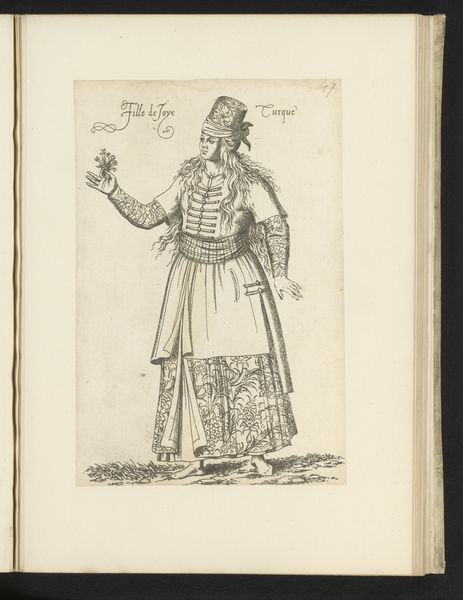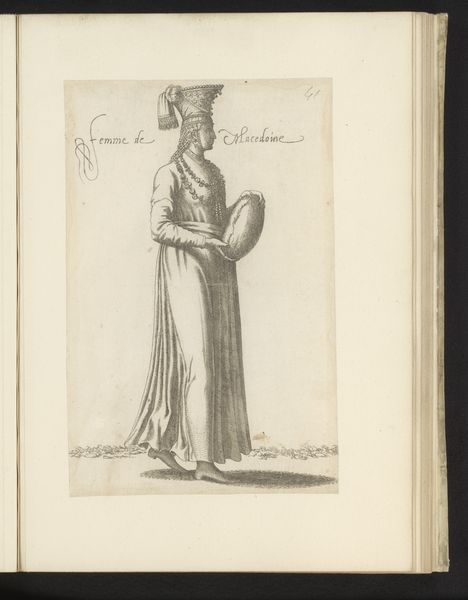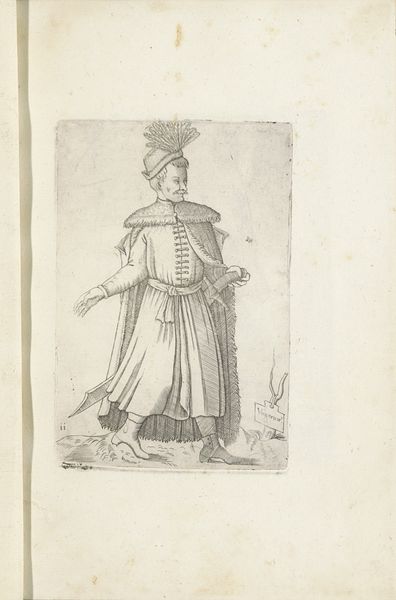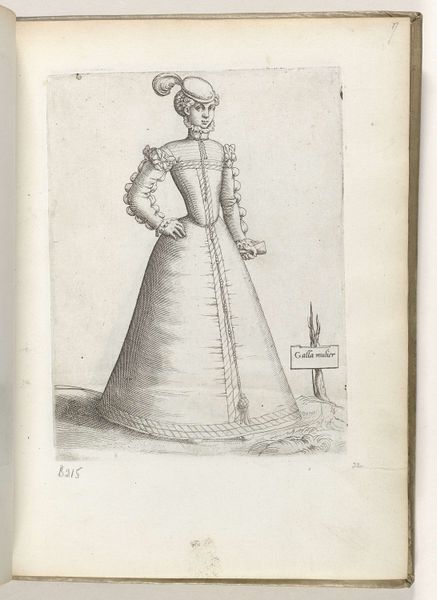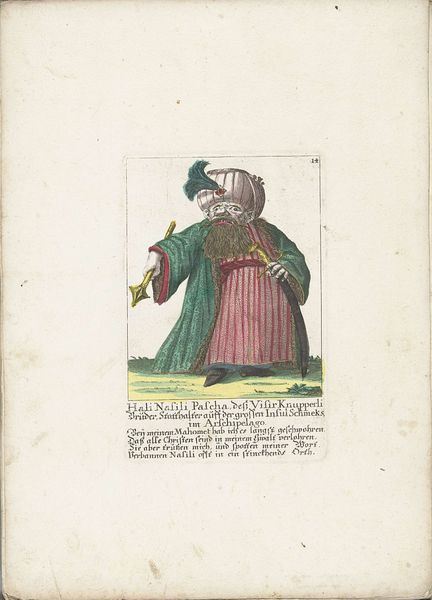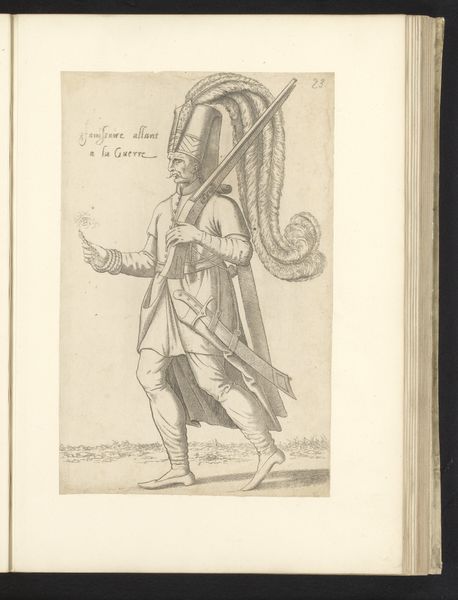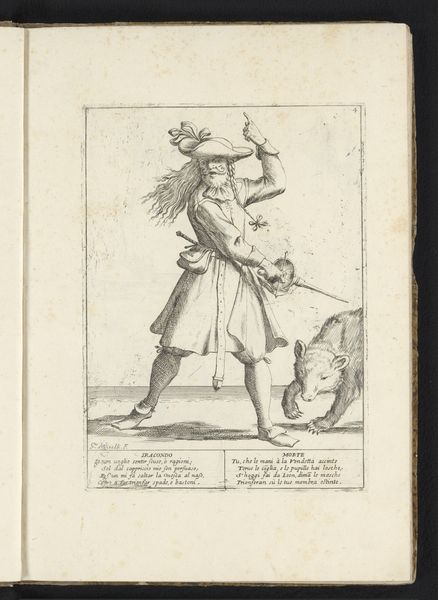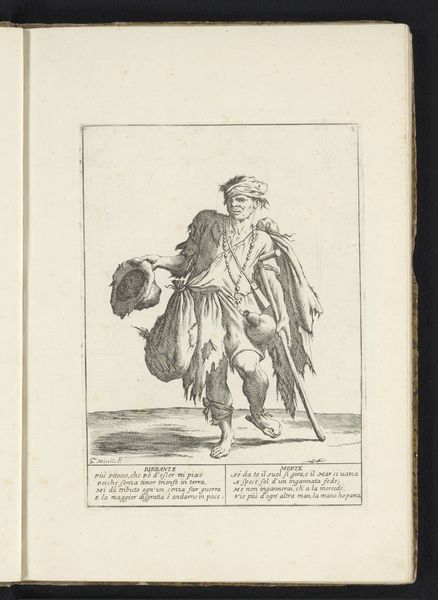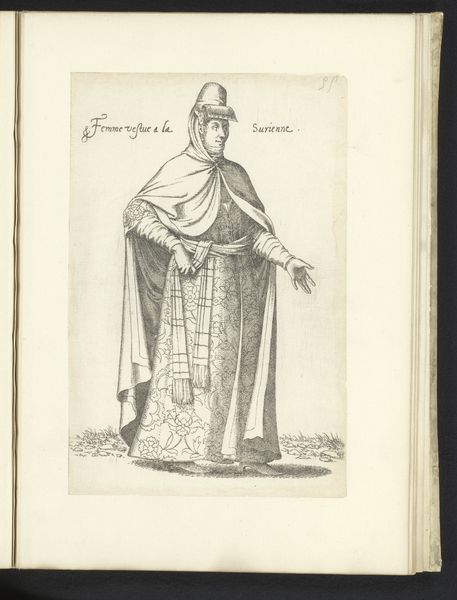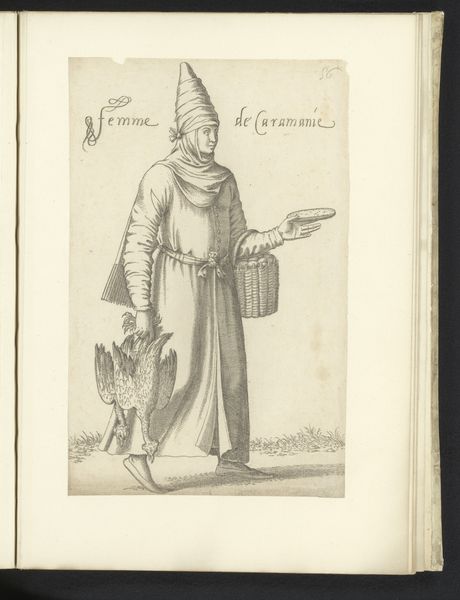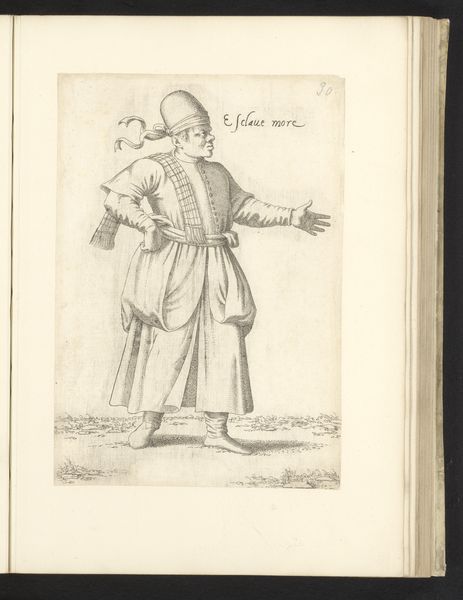
drawing, paper, ink, engraving
#
portrait
#
drawing
#
paper
#
11_renaissance
#
ink
#
islamic-art
#
engraving
Dimensions: height 260 mm, width 176 mm
Copyright: Rijks Museum: Open Domain
Editor: Here we have "Aga (opperbevelhebber) der janitsaren," or "Aga (Commander-in-Chief) of the Janissaries," a Renaissance engraving made with ink on paper by Léon Davent. It gives a great sense of power through simplicity; the lines are clean, but the figure is imposing. What jumps out at you when you look at this work? Curator: The weight of the headdress is striking, isn't it? And look how it echoes the figure’s posture: sturdy, confident, planted. This isn’t just decoration; it signifies authority, power. Beyond mere status, it speaks to a complex visual language embedded in cultural memory. The feather could also point towards military endeavors. Editor: You mean like the symbols themselves have history? I guess I never thought of a hat that way. Curator: Absolutely! Think about what a Janissary represented. The Aga, their commander, would embody their values. Every element – the cut of his coat, the arrangement of the buttons – contributes to a narrative. The artist understood that the smallest visual details speak volumes about the figure’s societal position and psychological presence. Do you get a sense of his role based on this alone? Editor: I do. He seems important, formal… somehow set apart from everyday life, though it’s still very human. Curator: The tension between the particular and the archetypal is compelling, right? Davent offers not only a portrait of an individual, but also a potent symbol of a complex historical period. Each time someone views this print, they are engaging with layers of cultural encoding. Editor: This has really changed how I view portraits now. Thanks, I have so much to explore after this. Curator: My pleasure, I am delighted it resonated.
Comments
No comments
Be the first to comment and join the conversation on the ultimate creative platform.
